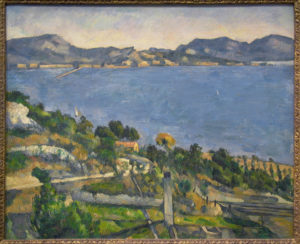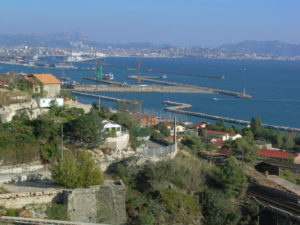R390 – Le Golfe de Marseille vu de l’Estaque, vers 1882 (FWN119)
Pavel Machotka
(Cliquer sur l’image pour l’agrandir)
Thanks to the recent research done in l’Estaque,[1] we know a number of new sites that Cezanne painted there in the late 1870s and again in the early 1880s, almost all of which are based on one form or another of the parallel touch. Is it the various forms of the touch that fascinate, rather than their developmental sequence (which in any case remains elusive); they compel us to think about the paintings themselves, and the role of the site in their realization. Le Golfe de Marseille vu de l’Estaque, for example, might have been painted during the first period or early during the second (but probably not later); we cannot be sure. The picture is a crowded, bustling painting of what was even then a rather congested hillside and is now an overcrowded port as well. The parallel touch itself is quite small, densely set down, and built up of repeated layers of paint, not just in the hillside but, surprisingly, in the outline of the distant shore as well. In the near distance, it details roads, buildings, railway tracks and trees; it is curiously abstract in its patient, uniform touch and concrete in its references. It would be tempting to think that the touch suggests not the particular details but the busy disorder itself, but that would explain only the hillside, not the careful outlines of the distant shore. Possibly we are seeing a less than self-assured handling of the paint, one in which the painter cannot decide, thanks to the untidy subject, how best to juxtapose the touches.
[1] By Xavier Prati and Georges Reynaud.



